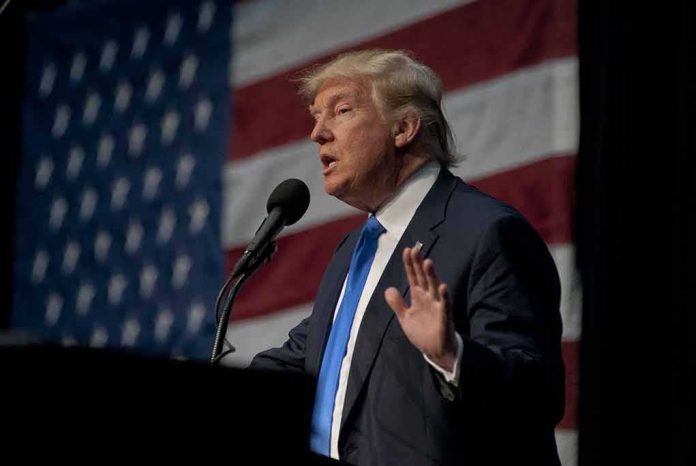
The Trump administration’s ultimatum to Hamas is not just a political maneuver; it’s a high-stakes gamble that could redefine the future of Middle Eastern peace efforts.
Story Overview
- Trump issues a stark ultimatum to Hamas to disarm or face potential US intervention.
- The ceasefire between Israel and Hamas remains fragile amid ongoing peace negotiations.
- The threat highlights the unresolved issue of Hamas’s military capabilities.
- The stakes involve US credibility and the potential for regional stability.
Trump’s Ultimatum: A New Chapter in US-Hamas Relations
President Donald Trump has thrown down the gauntlet to Hamas, demanding the group disarm amid delicate negotiations for peace in Gaza. Trump’s warning, delivered with characteristic bluntness, suggests a willingness for direct US intervention if diplomatic avenues fail. This development comes as the world watches the tenuous ceasefire brokered between Israel and Hamas, which has been marred by years of devastating conflict and humanitarian crises.
The ultimatum underscores a significant shift in US foreign policy dynamics, particularly in how it engages with militant groups like Hamas. This approach raises questions about the feasibility and implications of potential military action, especially given the complexities on the ground in Gaza, where Hamas’s military infrastructure remains robust.
The Historical Context: A Long Road to Peace
The conflict between Israel and Hamas is deeply rooted, with the latter’s emergence in the late 1980s leading to repeated cycles of violence. The latest escalation began with Hamas’s attack on Israel in 2023, sparking a prolonged war. The international community has long struggled to broker a lasting peace, with previous ceasefires failing to address core issues such as disarmament.
The Trump administration’s aggressive stance contrasts with past US efforts, which have typically favored diplomacy and containment. The current peace negotiations, brokered by the US, represent a critical opportunity to finally address the long-standing issues that have fueled this conflict.
Key Players and Their Stakes
Central to the unfolding drama are the key stakeholders: President Trump, Israeli Prime Minister Benjamin Netanyahu, Hamas leadership, and regional mediators like Qatar. Trump’s ultimatum places pressure on these actors, each with their own motivations and constraints. Netanyahu faces internal pressure to secure Israeli hostages and ensure security, while Hamas is fighting to maintain its military and political leverage.
Regional players, including Qatar, aim to stabilize the region while addressing humanitarian needs. The balance of power is delicate, with the US leveraging its influence to push for a resolution that aligns with its strategic interests in counterterrorism and regional stability.
The Path Ahead: Challenges and Implications
The road to peace is fraught with challenges, particularly the contentious issue of Hamas’s disarmament. Analysts at the Center for Strategic and International Studies highlight the complexity of enforcing such measures, given the group’s extensive tunnel networks and military assets. The success of the peace plan hinges on resolving these issues without reigniting conflict.
In the short term, the ceasefire offers a reprieve for civilians in Gaza, with humanitarian aid beginning to flow. However, the long-term prospects for peace rest on the disarmament process, which remains vague and contested. The stakes are high, with US credibility and regional stability hanging in the balance.









